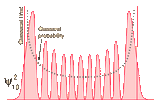Anonymous
7/4/2025, 11:54:38 PM
No.16716120
[Report]
>>16716153
>>16716203
>>16716383
>>16716416
>>16716440
>>16716501
>>16716908
>>16718236
>>16718244
>>16718697
>>16720528
>>16721889
>>16724853
>>16725433
>>16728033
>>16731270
>>16731277
>>16731676
>>16735581
>>16736676
>>16738082
>>16738242
>>16740206
>>16743699
>>16745049
>>16745149
Explain to me how a fundamentally nondeterministic quantum world can create our deterministic macroscopic world.
How is determinism created/ where is it introduced?
How is determinism created/ where is it introduced?






